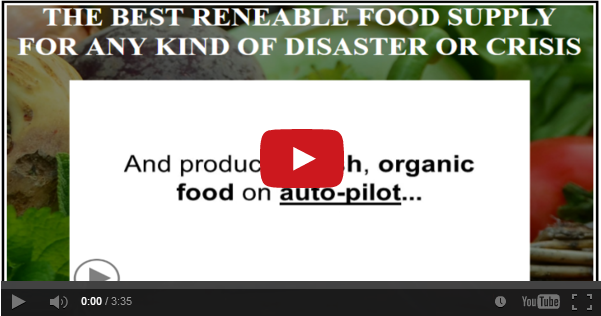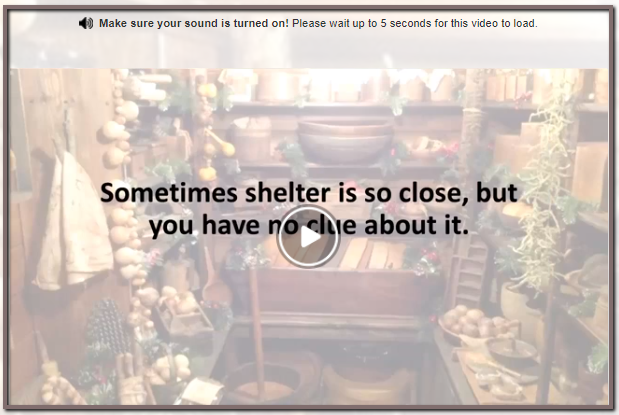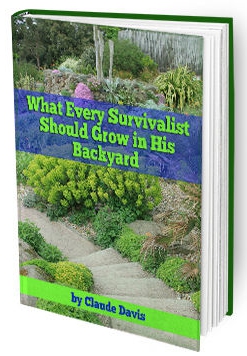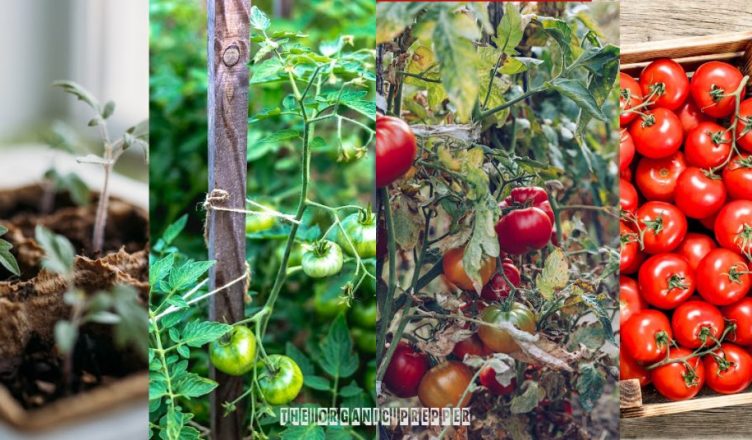Tomatoes are one of the most widely grown, most versatile vegetables available. There are red ones, green ones, blue, black, and pink ones. They’re useful in everything from ketchup to salsa, spaghetti sauce, and chili. While I have met a few who don’t like them, the majority of home gardens grow them.
But how?
Like any other plant, tomatoes have preferences. The conditions they’re grown in matter, and intended use matters in selection. There are pages upon pages of varieties in the average seed catalog to choose from, and that can feel overwhelming! Ditto the gardening center: there are shelves upon shelves upon shelves of tomatoes. In this article, I’ll discuss what you need to know to be able to choose well and grow a bountiful harvest of beautiful tomato treasure.

Here’s an update on my indoor tomato project
First, an update on my indoor grow operation. I wrote about it here. The end result wasn’t bad, but it wasn’t great either. The determinant Tiny Tim did produce a few handfuls, enough to go with salad but nowhere near enough to preserve. The indeterminant Dancing with Smurfs hasn’t even produced that much and is now waiting to go outdoors to see if that helps.
Remember: I used both heat mats and grow lights to mitigate winter conditions. I also used an electric toothbrush to pollinate the flowers, and I fertilized them since neither seed starting nor potting mix really has enough nutrients for serious fruit production. The Tiny Tim has died off at this point.
Determinant vs. indeterminant tomatoes?
So how do we pick our plants, and what’s this stuff about determinant and indeterminant? The latter question being the easiest, that’s where I’ll start. Tomatoes are classified as being either determinant, which means they produce most of their fruit at once and die, or indeterminate, meaning they keep producing fruit until a hard frost kills them. Which you choose depends upon how you plan to use them.
Some people prefer determinants for canning/freezing because the fruits are all ready at about the same time. I nearly always use indeterminant varieties and preserve them throughout the harvest season, finding that enough tomatoes are often ready at a given point to make my recipe. I tend to preserve as things are ready, whereas some gardeners prefer to do all of their tomato dishes at once.
How will you use your tomatoes?
Another issue to consider when selecting your variety again relates to how you plan to use your harvest. Do you want tomatoes for sauce, condiments, or just salads?
I tend to plant a few varieties for each purpose. For example, I like Amish paste for sauce and cherry tomatoes for salads. Slicers are good for canning as well as for sandwiches. Cherokee Purple does well in my area, but who could resist the fun of trying Brad’s Atomic Grape?
Other factors in variety selection
Also, consider the length of your growing season. In my area, it’s much better to start with transplants than from seed because I have 5, perhaps 6 months at the outside to get my plants in the ground and the fruits into my pantry. Even gardener friends in more southern grow zones like to start with transplants as it saves time and they can get several harvests before the end.
If you’re new to gardening, I’d get plants locally. Garden centers and plant sales are easy to find by using either the phone book or your favorite search engine. If money is a consideration, look for plant giveaways. My local University Extension office has one. Yours might also. Many high schools have botany clubs and sell plants to make money. I like all of the above because it keeps my supply chain local and supports my local economy. I’ve written about starting from seed here and when to plant your seedlings outdoors or not here.
What are the right conditions to grow tomatoes?
So what conditions do tomatoes prefer?
Most vegetables prefer a soil pH of 6.5-7.0 or so. pH affects the ability of plants to take up nutrients through the roots and can be determined by soil testing. A simple Luster Leaf RapiTest, available online or from your garden center, is a color change test that will get you in the ballpark. Lab testing is more accurate but also more expensive. Your local Extension office will offer it, and many labs allow individuals to ship to them directly. However, be aware that most of these tests give information for pH and NPK only. Other tests may be available upon request at an added expense.

I’ve had great results with Soil Savvy. Their tests include all of the above plus the micronutrients and are comparable in cost to the average lab test. I lab test my soil every 3-5 years and use the RapiTests in between. Tomatoes, as with most other vegetables, tend to be heavy feeders so the soil environment needs to be able to support that.
Expert tip: adding a bunch of fertilizer to your soil on a wing and a prayer won’t work. Plants will use what’s there, and you may end up with the most lovely of plants but no fruits. I had this experience with potatoes, adding too much nitrogen one year. I had lovely plants but not a single tuber!
Tomatoes also need lots of sun, 6-8 hours per day of direct sunlight at least. The more the better here! They’ll need some kind of support, either a tomato cage or a trellis, to keep the fruits from rotting on the ground. Our friend Laurie Neverman of Common Sense Homesteading offers some great trellis ideas here.
Watering is another consideration. Most vegetables need about 1” of water per week, but irregular watering can yield cracked fruits and watering soil that’s already wet can lead to root rot. I check necessity by digging my finger down 2-3”. If my finger comes up dry, it’s time to water. If the soil is mud, let it dry out. Plant roots need that wet/dry cycle to stay healthy. If my finger comes out kinda wet, I wait and check again the next day. Since I have municipal water, I use a water filter that attaches to my main spigot. Nothing will make plants pop like rain, though!
What problems should you look out for when growing tomatoes?
Tomatoes have their problems as well. Mine have Septoria leaf spot pretty much every year. I’ve written about that and how to manage it here. If you’re really (un)lucky, you may experience tomato brown rugose fruit virus. Learn more about that here.
There are some 30 diseases that can affect tomatoes, and that doesn’t even count your average squirrel! For a nice list along with organic management, go here. There are also good prevention strategies given at that link.
Harvesting tomatoes
When it comes to harvesting, just twist and pull your treasures from the vine. Look for a nice, even color and firmness of fruit. Some heirloom varieties are ripe before they completely turn color and cherries will often crack if they’re left on the vine too long. Experience is your best teacher here.
Temperature will affect this: if you’ve had a long stretch of days above 86F, tomatoes will stop ripening. Pick them when they’re between firm and soft. At the end of the season, tomatoes that are still green can sometimes be ripened on the window sill. You can also put them in a paper bag or box. Some people put a ripe apple or banana in with them to speed things up, but check daily for rot and mold. In my experience, not all tomatoes will ripen indoors, but it doesn’t hurt to try.
What are your tomato tips?
If you’re looking for ways to preserve your harvest, check out these ideas! Daisy gives ten ways here and suggests some very cool books on preservation in general here.
How do you grow your tomatoes? Do you have any tomato tips you can share? Have you ever had bad luck with tomatoes? If so, what happened? How do you preserve them?

source : Amy Allen



